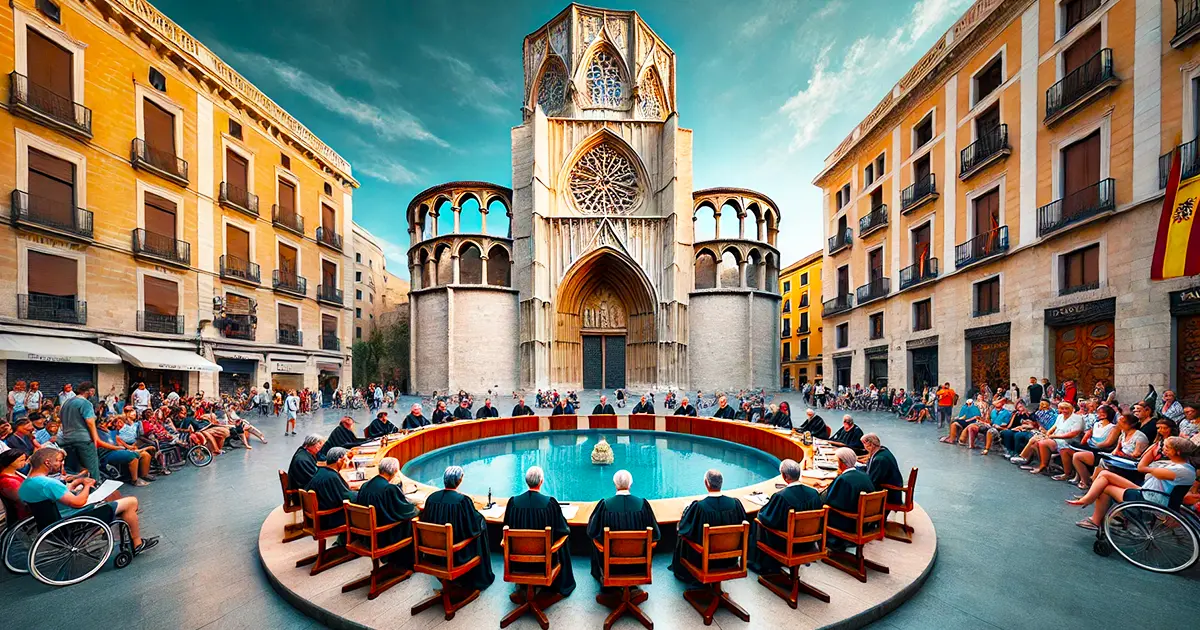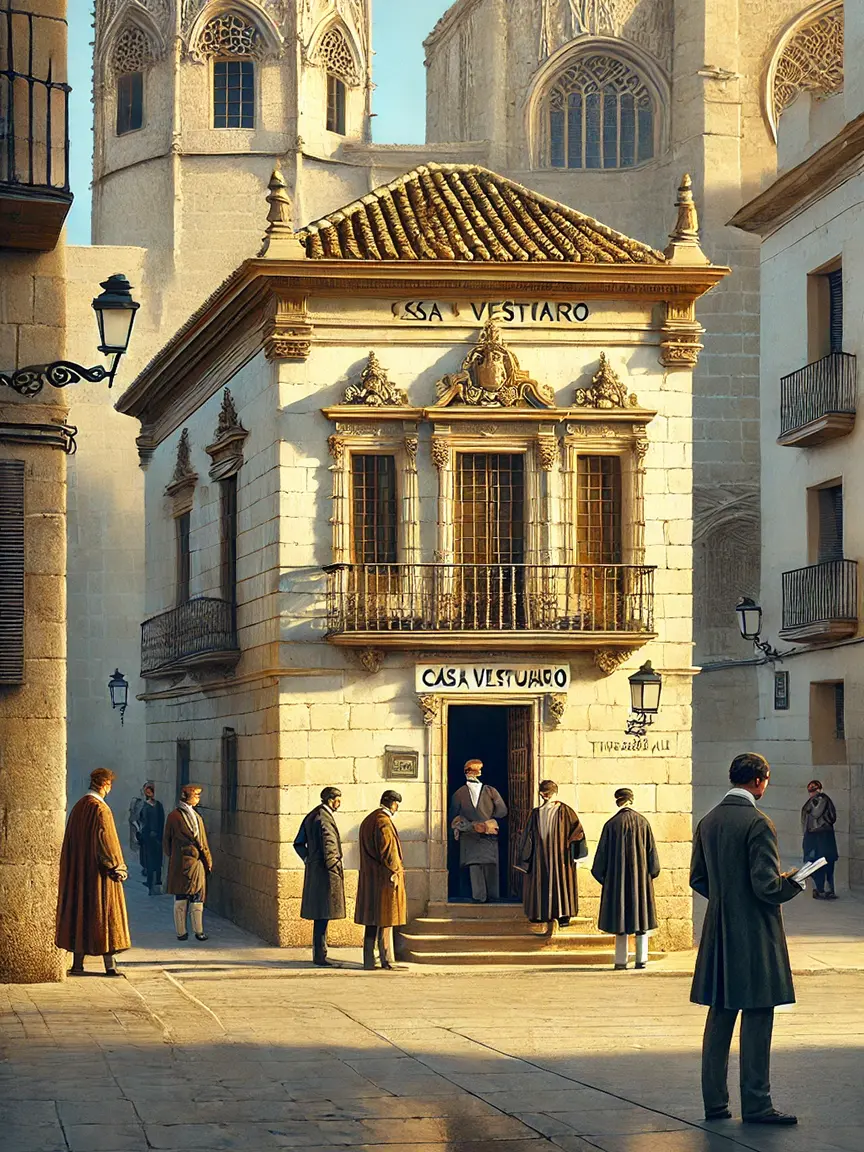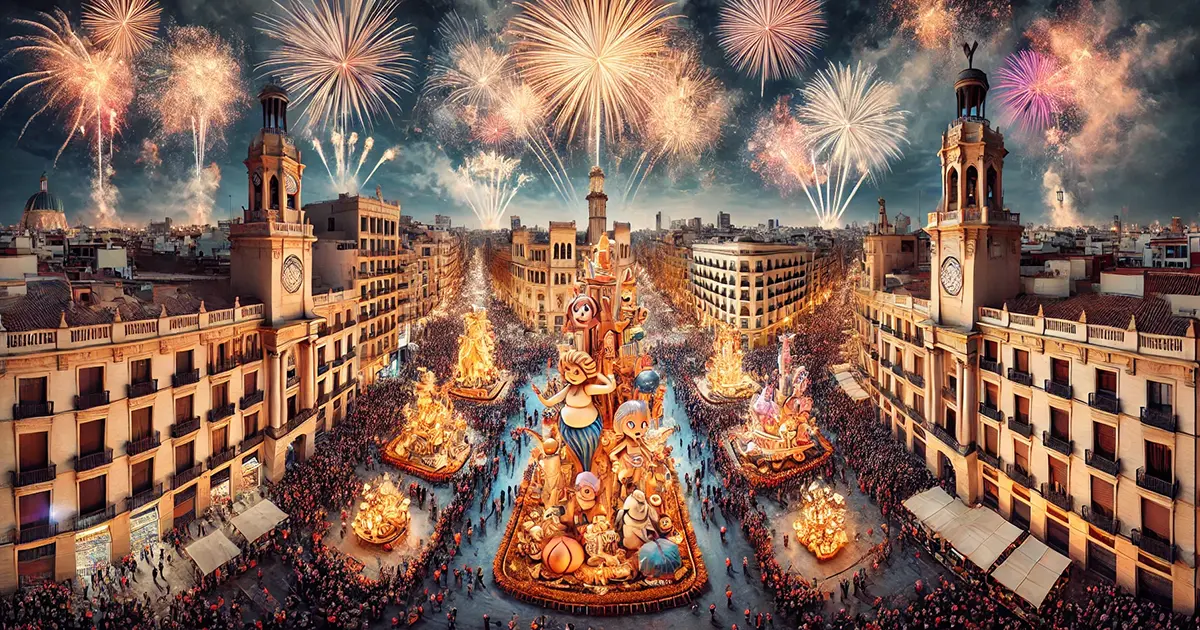If you’re renting a bike in the vibrant Ruzafa district, you’ve already made the first step toward discovering some of Valencia’s most iconic cultural treasures. One of the most fascinating — and often overlooked — experiences awaits you just a short ride away at Plaza de la Virgen: the Tribunal de las Aguas, or Valencia’s Water Court, held every Thursday at noon.
This isn’t just a quirky tourist attraction. Europe’s oldest justice system still operates today, unfolding before Valencia Cathedral’s Apostles’ Gate, a cherished city monument. The court’s traditions are so historically significant that UNESCO declared it Intangible Cultural Heritage of Humanity in 2009.
What Exactly Happens?
Each week, eight elected representatives from the irrigation communities of the Valencian Huerta (the fertile agricultural land surrounding the city) gather to resolve water-use conflicts between farmers. Dressed in traditional black attire — simple but powerful — they sit on centuries-old wooden and leather chairs, forming a semicircle in the open air.
The entire process conducts itself in Valencian, and it surprises with its swiftness and straightforwardness. There are no judges in robes, no paperwork, no long deliberations. If a dispute arises, the court summons the defendant, who stands before it to present their case — often in a matter of minutes. The tribunal’s decisions are final and unappealable, a rare example of community trust and efficiency in action. When no disputes are presented, the session is still held symbolically, often lasting less than ten minutes.
Valencia’s Water Court — A Legal Relic From the Past
The Water Court’s origins stretch back over 1,000 years, to the Moorish period in Spain, when water distribution in dry regions was a matter of survival. Later, under the Christian rule of King Jaume I in the 13th century, the court gained official recognition and maintained its status as a legitimate authority. Today, it remains the only legislative body from that era still in continuous operation.
This unique judicial model celebrates its speed, transparency, and accessibility — qualities that modern legal systems often lack. In fact, it’s frequently studied in universities across Europe as a case study in alternative justice systems.
Make It an Experience
To get the full experience, arrive early and head to the small building across from the cathedral called Casa Vestuario (the dressing house). This is where the trustees gather and prepare before the public hearing. It’s a rare chance to see living history in motion — no dramatizations, no performances — just real people upholding a centuries-old civic duty.
And don’t worry about the weather. Whether it’s sunny, rainy, or windy, the tribunal is never cancelled, unless Thursday happens to be a public holiday. In that case, it’s held on Wednesday instead.
Mark Your Calendar: March 27 Tribunal
If you’re in Valencia around March 27, don’t miss that week’s session. It promises to be particularly special, drawing both locals and international visitors interested in Valencian traditions. It’s a great time to experience this centuries-old gathering and enjoy the lively atmosphere in Plaza de la Virgen.
Plan Your Visit to Valencia’s Water Court
- 📍 Location: Puerta de los Apóstoles, Valencia Cathedral
- 🕛 Time: Every Thursday at 12:00 PM (11:30 AM recommended arrival)
- 🎟 Tickets: Free and open to the public
- 🌦 Weather: Held in all conditions
- 📅 Exception: Moved to Wednesday if Thursday is a public holiday
Extend Your Cultural Journey
After attending the Valencia’s Water Court, hop back on your bike and continue exploring! Valencia packs other cultural gems — from the futuristic City of Arts and Sciences to the quiet beauty of the Turia Gardens and hidden corners of the old town. Or better yet, book a guided bike tour to uncover stories, sights, and places you’d never find on your own.
Valencia shines on two wheels, revealing fresh wonders to first-timers and seasoned visitors alike.















